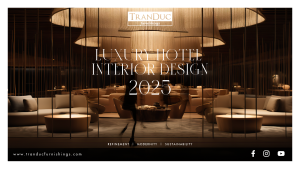
Three types of modern furniture design: Functionalist Modern—progressive, complying to a machine aesthetic and mostly developed by architects; Transitional Modern, which has become known as contemporary and was imbued with features from the past; and Commercial contemporary, termed “Borax”
Notes: The article was collected based on the contribution of Edward J. Wormley (1907-1995) Former Design Director, Dunbar Furniture Company in NYC as a leader in Modern Furniture during the 1950s.
After WWII, people married at a younger age. Overall population growth increased, and a significantly expanded middle-income group benefited from a generally growing quality of life. Furniture grew more compact, lighter, and simpler to maintain, as well as more commonly available.
There have been three types of modern furniture design: functionalist modern—progressive, complying to a machine aesthetic and mostly developed by architects; transitional modern, which has become known as contemporary and was imbued with features from the past; and commercial contemporary, termed “Borax” since purveyors of that cleaner used to provide premiums, and the word came to be associated with extra values which commercial furniture often offered by The social and economic changes of the time impacted all furniture design: formal living dropped, domestic labor got more mechanized, living spaces reduced, notably in height, and home entertainment became more significant.
Functionalism in Bauhaus The German Bauhaus School of architecture is the most closely connected with functionalism. ‘Bauhaus’ is a German phrase that means ‘building house.’ Following its loss in World War I, Germany’s economy was crumbling in 1919. Walter Gropius, an architect, was named to lead a new organization tasked with aiding the country’s reconstruction and establishing a new social order. The Bauhaus, as it was known, advocated for a new kind of worker-friendly shared housing. Cornices, eaves, and ornamental elements were all condemned by Bauhaus architects as ‘bourgeois’. Consumer items with low prices, maximum usefulness, high quality, and simple, obvious forms were regarded vital. The abundance of wood in Scandinavia led to comparable rational, contemporary furniture in the 1930s, which was laminated using a number of processes. The Bauhaus’ greatest successful achievement was the exaltation of new technology in progressive design.
Following WWII, prior design work resurfaced. For a period, Scandinavian designers ignored new technology in favor of a successful campaign for sculpted, solid-wood furniture in matte finishes, which significantly expanded the lexicon of progressive design. Italian furniture followed a similar trend, being more receptive to structural and technical innovations but also being more accentuated and less accepted in general. In-molded plywood and plastic chairs, as well as semi-architectural storage cabinets, American contemporary furniture had its first worldwide impact. The Bauhaus’ greatest successful achievement was the exaltation of new technology in progressive design.
The finest contemporary furniture has gained the distinction of being in excellent, appropriate taste by being conservative in design (but not imitative), well-constructed, and meticulously polished. Most companies employed speeded-up adaptations of previous cabinetmaking procedures, depending on handmade detailing and wood. Between World Wars I and II, this, together with the United States’ focus on intentionally induced obsolescence, had an impact on all contemporary design. Late 18th- and early 19th-century court and country house furniture, with variants in Chinese and Rococo, were popular sources of inspiration for transitional modern, as they were for style revivals. This furniture was designed for a broad audience who felt avant-garde styles and materials to be excessively chilly and “clinical.”
Between 1930 and 1940, the majority of contemporary furniture was massive, bulbous, brightly colored, glossily polished, and rich in hardware or gleaming cloth. The masses liked it, but reviewers and connoisseurs didn’t. After 1945, sectional seating and storage units, spidery metal frames, and plastic-shell seats gradually filtered down from more progressive design levels to become commercial fads; the Victorian whatnot (a set of open shelves for the display of bric-a-brac) was revived as a room divider, freestanding and rectilinear. This furniture was designed for broad users who felt avant-garde shapes and materials to be excessively chilly and clinical. Around 1940, union workers battled tooth and nail to stop the development of foam upholstery, but within 15 years, it had become standard in sleeping and seating furniture. This furniture was designed for a broad audience who felt avant-garde shapes and materials to be excessively chilly and clinical.
Over time, a steady stream of new industrial processes influenced fundamental developments. Modern furniture design seemed to be on the verge of a new age, with lighter masses, slimmer outlines, and new shapes enabled by new materials and technology. However, by 1970, faddism and commercial versions of odd and bloated sitting furniture had introduced a new brand of “Borax.”